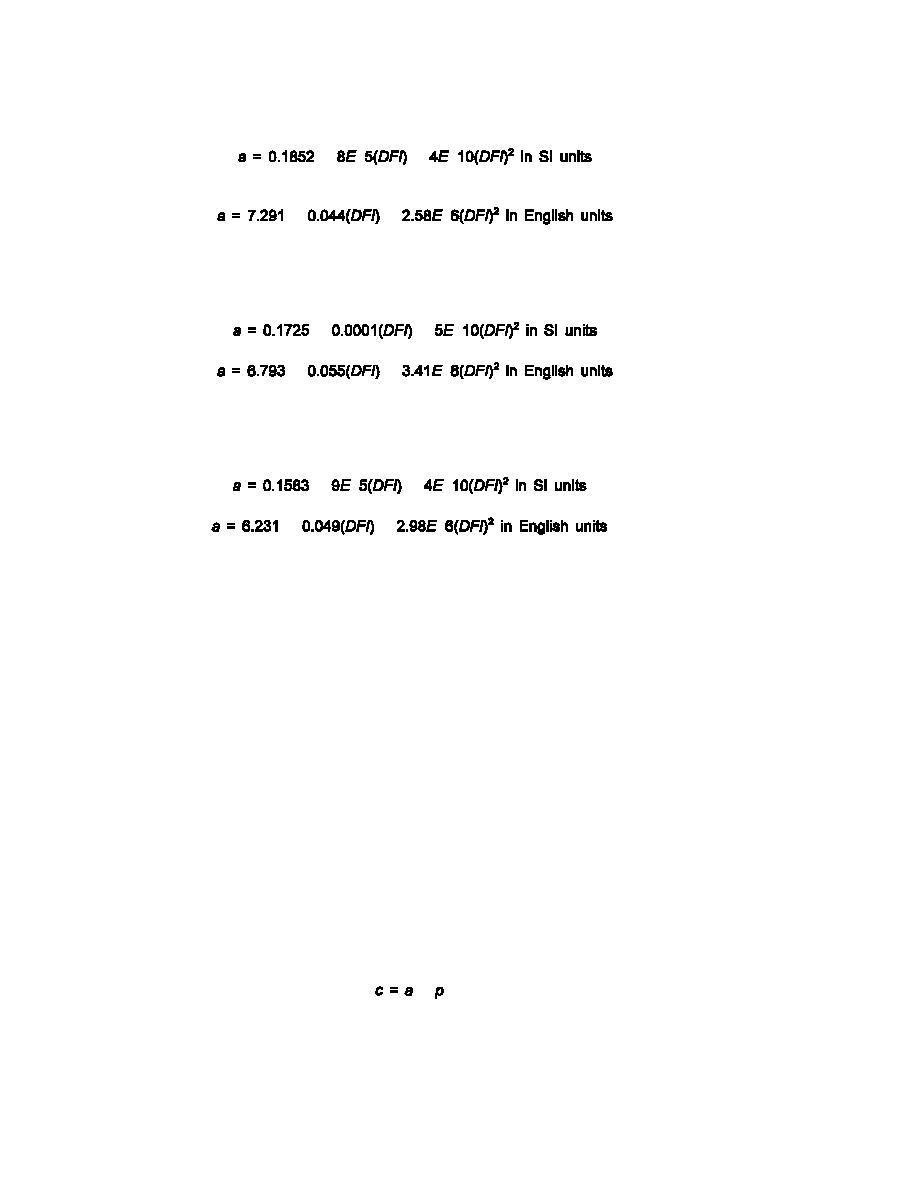
UFC 3-260-02
30 June 2001
(20-6)
%
&
&
&
(20-7)
%
&
&
(3) For ( = 2,400 kg/m3 (150 lb/ft3) and T = 3 percent,
(20-8)
%
&
&
(20-9)
%
&
&
(4) For ( = 2,400 kg/m3 (150 lb/ft3) and T = 7 percent,
(20-10)
%
&
&
&
(20-11)
%
&
&
where
DFI = EC-hours in SI units or EF-days in English units.
( = soil density
T = soil moisture content
In Figure 20-5, the frost penetration curves for ( = 2,160 kg/m3 (135 lb/ft3) and T = 3 and
7 percent are combined because the curves were very close together. Also, note that these
densities and moisture contents represent an approximation of a weighted average value of
combined base.
b. Step Two. Estimate the moisture content and dry density of the nonfrost susceptible base-
course material. For a conservative design, the 3 percent moisture content, 2,400 kg/m3
(150 lb/ft3) base material should be selected. Determine frost penetration depth for complete frost
penetration from Figure 20-5.
c. Step Three. Compute thickness of combined base (combined thickness of base, subbase,
drainage layer and separation layer) required for zero frost penetration into the subgrade
(Figure 20-6) as follows:
(20-12)
&
20-8



 Previous Page
Previous Page
